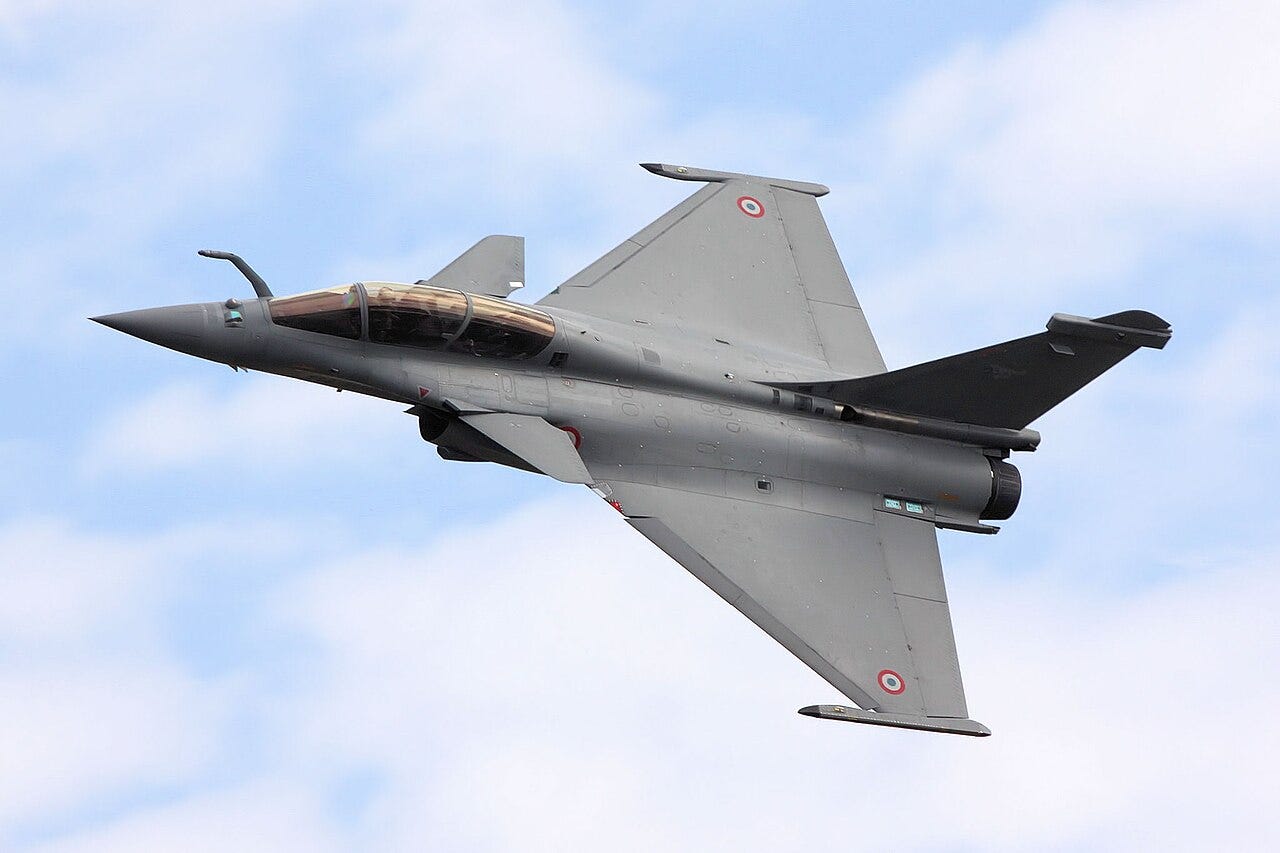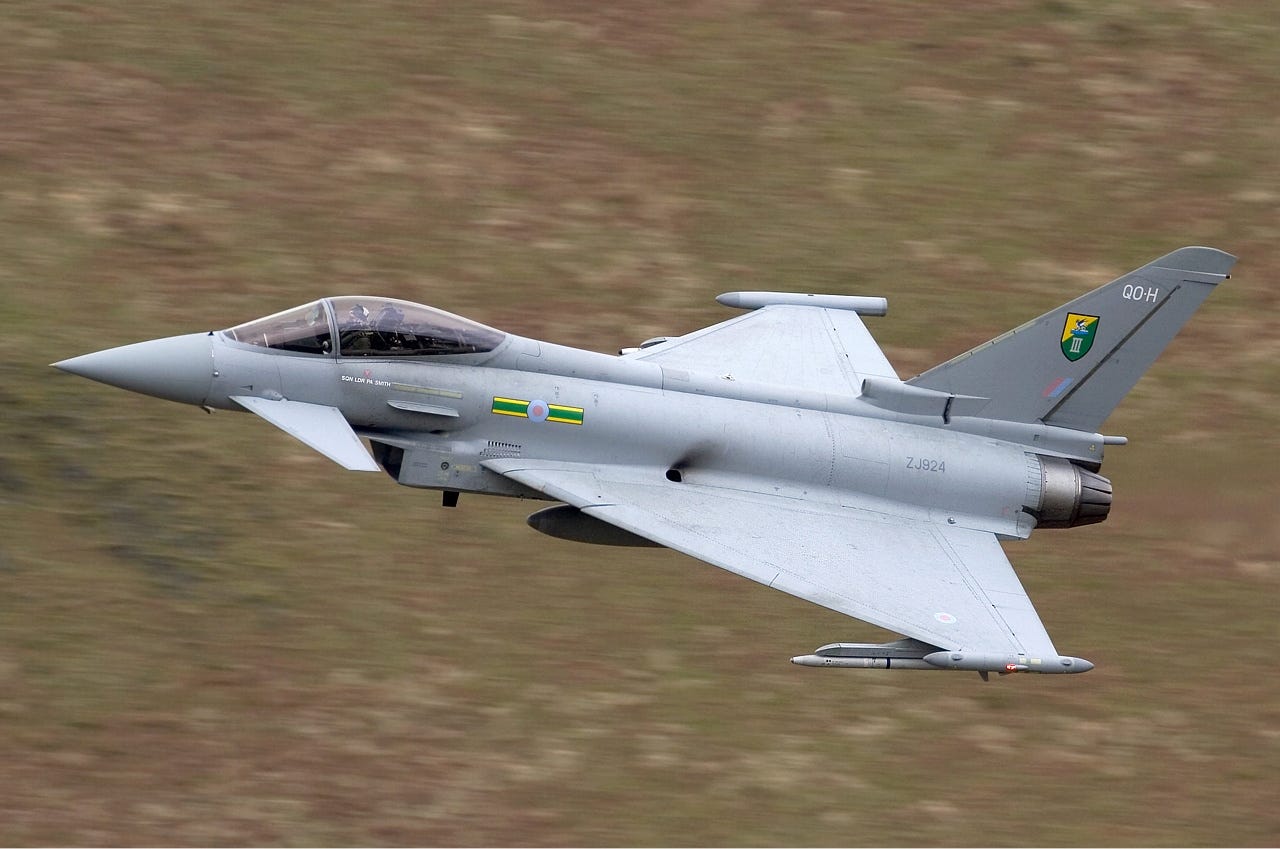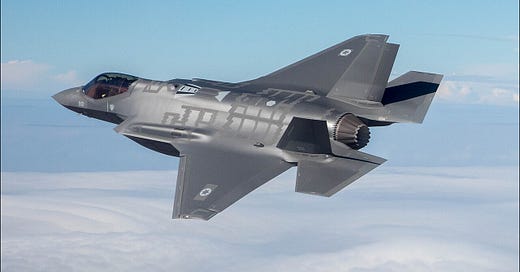How Israel Transformed the F-35 Into the World's Most Unique Fighter Jet
The Revolutionary Innovation: When America Hands Over the Keys
"Both optimists and pessimists contribute to our society. The optimist invents the airplane and the pessimist the parachute." Gil Stern
In the world of modern fighter aircraft, where nations compete for air superiority with cutting-edge technologies, Israel achieved something no other country has managed: it received unprecedented American approval to modify the "brain" of the F-35 fighter jet. The result is the F-35I "Adir" - a uniquely Israeli variant that challenges conventional wisdom about modern fighter aircraft and raises fascinating questions about the future of air warfare.

The Revolutionary Innovation: When America Hands Over the Keys
In 2010, when Israel became the first customer outside the nine-nation consortium that developed the F-35, it received something extraordinary. While other nations purchase the aircraft "as is," Israel was granted approval to make modifications that reach deep into the aircraft's digital architecture.
Israel became the first country outside the United States to receive a specially customized F-35, including a Mission Computer (MMC) reconfigured with a "plug-and-play" architecture that allows integration of Israeli weapons and systems. This is like buying an iPhone and getting Apple's permission to modify the operating system - something that simply doesn't happen.
The interesting aspect is that the United States didn't grant this approval out of goodwill. It understood that Israel serves as the perfect living laboratory for what happens when an F-35 encounters real 21st-century threats: advanced Russian air defense systems, sophisticated electronic warfare, and operations deep in enemy territory.
The Game-Changing Upgrades
Next-Generation Electronic Warfare System
Israel received approval to replace the standard BAE AN/ASQ-239 electronic warfare suite with indigenous Elbit technologies, specifically tailored to regional threats like Russian S-300PMU-2 systems. This isn't a cosmetic upgrade - it's like replacing a Tesla's navigation system with one that specifically knows how to handle Israeli roads.
The Israeli system is customized to identify and neutralize specific threats: Iranian surface-to-air missiles, Hezbollah jamming systems, and Syrian air defense networks. While the American system is designed for global threats, the Israeli version specializes in specific adversaries.
Communications Network Without American Dependence
One of the most critical modifications is the development of an independent Israeli communications system. Israel developed a local datalink that bypasses the American MADL system, enabling real-time communication with other Israeli aircraft and local air defense systems.
This isn't just about convenience - it's about technological sovereignty. During a crisis, Israel isn't dependent on American communication networks or approvals from Washington to operate its aircraft at full effectiveness.
Israeli Weapons on American Platform
Rafael integrated advanced Israeli weapons including Python-5 air-to-air missiles with dual-band infrared seekers, SPICE precision-guided munitions with ranges up to 62 miles, and specialized one-ton penetration bombs designed for internal carriage.
This creates a unique combination: the aircraft carries weapons developed specifically for regional threats, but delivered by the world's most advanced stealth platform. It's like putting Israeli combat tools inside an American "invisibility cloak."
The Problem Everyone Tries to Solve: Range
One of the major limitations of the standard F-35 is its limited range. The F-35A can fly approximately 680 miles, which is sufficient for most American and European needs, but not for Israeli requirements.
Israel developed range-extension solutions that enabled aircraft to reach targets nearly 1,000 miles away without aerial refueling. How exactly? This remains a military secret, but speculation includes specially adapted external fuel tanks or modifications to internal fuel tanks.
This solution is important not just for Israel. Every country wanting to operate F-35s over long distances - from Japan and Korea to Australia - is watching with keen interest how Israel solved this problem.
How Does It Compare to Global Competition?
Dassault Rafale (France)

The Rafale is a balanced aircraft with a range of 1,118 miles and a payload capacity of 20,944 lbs, but at a cost of approximately $125 million. It excels in air-to-air combat but lacks the true stealth capabilities of the F-35.
Eurofighter Typhoon (UK/Germany/Italy/Spain)
The Typhoon is an excellent air superiority fighter with a very strong thrust-to-weight ratio, costing around $117 million. It's fast and agile, but like the Rafale - not stealthy.

Saab Gripen E (Sweden)
The Gripen E is the most affordable in the group - $60-70 million, with low operating costs of €4,000 per flight hour compared to €15,000 for the Rafale. It's small and efficient but limited in range and weapon load.

What Makes the F-35I Different?
The major difference is that the F-35I is the only aircraft that combines:
True stealth: Ability to evade advanced air defense systems
Regional adaptation: Systems developed specifically for local threats
Technological independence: Ability to operate and maintain the aircraft without external dependence
Extended range: Creative solutions to the range problem
The Real Technological Gap
European aircraft excel at what they do, but they still belong to generation 4.5. Despite the Rafale having a reduced radar signature, it's still significantly larger than that of the F-35. It's like the difference between a well-camouflaged car and an invisible car.
In a world where China has developed the J-20 and Russia the Su-57 (fifth-generation fighters), countries relying on generation 4.5 aircraft find themselves at a growing disadvantage.
What's fascinating about the F-35I story is that it proves an important principle: sometimes good technology + local adaptation beats better technology without adaptation.
Israel has operated its F-35I aircraft for over 15,000 flight hours in combat operations, more than any other F-35 variant worldwide. This isn't just a number - it's practical experience that cannot be bought or replicated.
Each combat operation teaches the Israelis something about how to improve the aircraft, how to adapt tactics, and how to prepare it for the next threat. This creates a cycle of continuous improvement that widens the gap between them and competitors.
Combat Validation: The Proof in Performance
Israeli F-35I aircraft have conducted the most extensive combat operations of any F-35 variant worldwide, accumulating verified combat experience against sophisticated threats that no other nation has encountered. The aircraft demonstrated its capabilities in multiple theaters, including becoming the first country in the world to use the F-35 in combat during clashes with Iran in Syria in May 2018.
According to the IDF, on 15 March 2021 F-35Is shot down two Iranian drones, which was the first operational shoot down and interception carried out by an F-35. This milestone wasn't just symbolic - it demonstrated the aircraft's ability to engage and destroy targets in real combat conditions.
Recent operations have validated the aircraft's deep-strike capabilities. Israeli officials say the aircraft flew deep into Iranian territory, encountered little resistance, and returned without a single recorded loss, with missions executed without aerial refueling and with minimal radar detection.
Technical Specifications: The Numbers Behind Performance
The F-35I operates from a foundation of impressive specifications, enhanced by Israeli modifications:
Base F-35A Performance:
Combat radius: 630 miles (extended to nearly 1,000 miles with Israeli modifications)
Maximum speed: Mach 1.6+
Service ceiling: 50,000+ feet
Internal weapons bays: 2 (maintaining stealth profile)
Israeli Enhancements:
Range extended to over 2,200 km in cruise flight, making it possible to fly to Iran and back without refueling
Plug-and-play architecture that allows integration of Israeli weapons and sensors without compromising stealth characteristics
Indigenous electronic warfare suite optimized for regional threats
Cost Analysis: Value Proposition
When examining the global fighter market, cost becomes a critical factor:
F-35A (standard): ~$80-90 million (with Israeli modifications: undisclosed premium)
Dassault Rafale: 95 to 110 million euros each without armament
Eurofighter Typhoon: Around 95 to 110 million euros each without armament, but has higher maintenance costs
Saab Gripen E: 60 to 70 million euros, with operating costs of less than 4,000 euros per flight hour, compared with 15,000 for the Rafale and 18,000 for the Eurofighter
The F-35I's true value lies not just in acquisition cost but in operational effectiveness. Defense analysts quickly noted the significance of using fifth-generation aircraft in such missions, particularly when conducting precision strikes against heavily defended targets.
Operational Advantages: Why Stealth Matters
The fundamental advantage of the F-35I lies in its fifth-generation capabilities operating in contested environments. "There's a significant difference between today's military operations and what might be possible in 10 or 15 years," said Guy Snodgrass, a former Navy fighter pilot and Pentagon strategist. "In today's world, manned stealth aircraft like Lockheed's F-35 are the premier tools. Their networked sensor suites, real-time battlefield awareness, and trained pilots make them unmatched for missions like these."
This advantage becomes clear when comparing operational results. According to the Israeli Air Force, their F-35s neutralized critical air defense assets and gave Israeli pilots air superiority over much of Iranian airspace—a feat that unmanned systems have yet to replicate.
The Innovation Ecosystem: Beyond the Aircraft
Israel's approach to the F-35I represents more than aircraft modification - it's about creating an entire ecosystem of indigenous capabilities. Israel Aerospace Industries manufactures the aircraft's wing components, contributing over $2.5 billion to the global F-35 program through 2034.
This industrial participation ensures not just economic benefits but technological knowledge transfer and the ability to maintain and upgrade the fleet independently. It's a model other nations are studying as they consider their own fighter acquisitions.
The future of fighter aircraft will likely look more like the F-35I than the Rafale or Typhoon. Nations understand they need not just advanced technology, but the ability to adapt it to local requirements.
As of 2025, Israel operates 46 F-35I aircraft across three squadrons at Nevatim Airbase, with plans to expand to 75 total aircraft by 2030. With each additional aircraft, the technological and operational gap only grows. This isn't just about procurement - it's about transforming technology into a purpose-built combat tool.
The Strategic Implications
The F-35I story reminds us that in the world of military technology, being the most advanced isn't enough. You need to be the most relevant. And once you achieve both, you gain an advantage that's very difficult to replicate.
The aircraft's proven ability to operate in heavily contested airspace, combined with Israeli modifications for extended range and regional threats, creates a capability that no other air force currently possesses. This isn't theoretical - it's demonstrated through thousands of combat flight hours.
In the end, fighter aircraft are tools. The best tool isn't necessarily the most advanced, but the one that best fits the mission. The F-35I "Adir" is living proof of this principle.
While the Rafale excels in air-to-air combat and the Typhoon dominates in agility, and the Gripen offers cost-effectiveness, only the F-35I combines fifth-generation stealth with mission-specific modifications and proven combat effectiveness against sophisticated threats. In an era where air superiority can determine the outcome of conflicts, that combination may well be decisive.
The lesson extends beyond military aviation: in any high-stakes technological competition, the winner isn't always the one with the best product, but the one with the product best adapted to the specific challenge at hand. Israel's F-35I represents the gold standard for this approach.
Enjoyed this deep-dive analysis?
Subscribe to my Substack for more in-depth coverage of defense technology, geopolitical analysis, and the stories behind the world's most advanced military systems. I break down complex topics with the same rigorous, fact-based approach you just read.
Found this valuable? Share it with others who appreciate serious defense analysis. The intersection of technology and geopolitics shapes our world - help spread informed discussion.






"Israel developed a local datalink that bypasses the American MADL system"
MADL is a stealthy communication system intended only between small flights of F35s; it's been recently extended to go beyond four aircraft. (It's stealthy because it uses highly directional beams between the aircraft, which adjust as they move.)
F35s also carry the non stealthy Link 16 tactical networking to communicate with standard NATO platforms, which can be used in receive-only mode when stealth is required, for example to receive surveillance data from AWACS.
Israel has its own tactical data networking system which was added to its F35s that it uses instead of Link 16.
While not trying to be overly mean to the French defense industry (just kidding 😆), one could point out that in the recent flare-up between India and Pakistan, at least one and possibly 3 Indian Rafales were shot down by long-range Chinese air to air missiles. So much for the Rafale reduced radar cross section.
WeissWord is growing in sophistication-much I learned. And thanks to Les Vitailles and Stars Oskin for informative clarifications. Substack is an exactly the kind of platform in InfoWars that the F35’s are in aerial war. PTPOG